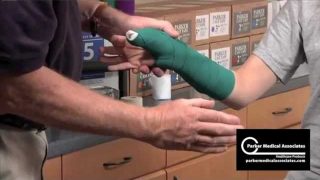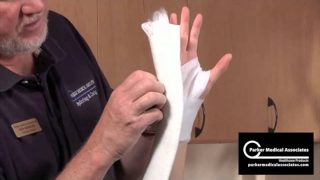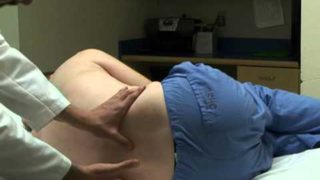Injections Around The Shoulder – Everything You Need To Know – Dr. Nabil Ebraheim
Dr. Ebraheim’s educational animated video illustrates injection techniques of the shoulder rotator cuff muscles tear.
Injection of the shoulder could be part of the treatment of shoulder pain, especially if the pain is more than what the patient can handle.
Shoulder pain will probably hinder the progress of therapy.
Which patient is the one who we should inject?
1- Patient has pain with restricted shoulder movement.
2- Patient that has nighttime pain.
3- Patient cannot lie on the shoulder due to pain.
Injection is predominantly used for elderly patients with rotator cuff tears or patients with impingement syndrome.
Injection usually reduces the pain and inflammation.
It can be done either blind or ultrasound guided for injection around the shoulder itself.
If the injection being done is for the scapulothoracic joint, give the injection either fluoroscopic or blind.
The injection could be done by a posterior, lateral, or anterior approach.
I use the lateral and posterior approach.
The posterior approach is done 1-2 cm below the posterolateral acromion.
I mark the spot for the injection, then I introduce the needle and inject the fluid.
The blind injection usually not accurate.
Some of the data reports that the accuracy is between 65%-75% is probably not true (probably worse than that).
Make sure you do not inject the rotator cuff tendon itself with steroids.
When you do blind injection, you probably are injecting to the tendon and you do not know it because you cannot see the tip of the needle.
When you use ultrasound guidance, you must see the bursa and find the tip of the needle and distend the bursa.
You may do manipulation of the patient’s shoulder manually after administering the injection.
When do I give a blind injection?
I usually do blind injection the first time that I see the patient, especially if the patient is elderly or if the patient has an impingement syndrome.
I will use ultrasound guided injection when patient has severe pain and some restriction of shoulder movement, or if the patient has had previous shoulder surgery.
There are multiple points of pain, especially in the shoulder itself such as biceps tendon and AC joint.
I personally examine the patient before and after injection.
It is a very rewarding experience to see that the patient’s condition improved after ultrasound guided injection.
I usually inject steroids, 40 mg kenalog with about 10 mg lidocaine.
Cortisone will give short term yet, reasonable relief in some patients.
The numbing medication will cause the patient to feel less pain immediately.
However, the steroids can negatively affect the tendon and cartilage, causing tendon damage and rupture.
The shoulder is not flat.
The shoulder is a ball and socket joint and when you inject above the ball (humeral head), you are controlled by the shape of the ball.
You may be injecting the tendon despite any good intention of only injecting the subacromial area.
You may be unable to reach the area of the subacromial space due to the shape of the proximal humerus.
Even with ultrasound guidance, I still have to make multiple modifications to see that the needle actually in the bursa.
How many times do I give the patient an injection of steroids?
Usually about 3-4 times a year.
PRP: has a high level of concentrated growth factors which may help in healing the tissue.
A blood specimen is taken from the patient, centrifuged, and then platelet concentrate is obtained and activated before injected in the target area.
PRP: is probably good for young, active patients who play sports.
These patients may have partial or intrasubstance rotator cuff tears that causes pain which limits activity.
PRP may help these patients to avoid surgery and allow for healing of the rotator cuff tear.
PRP is usually injected with ultrasound guidance because we can’t afford to do this blindly.
We need to be able to see where the problem area is and inject the PRP into the area of this problem.
Follow me on twitter:
https://twitter.com/#!/DrEbraheim_UTMC
Donate to the University of Toledo Foundation Department of Orthopaedic Surgery Endowed Chair Fund:
https://www.utfoundation.org/foundation/home/Give_Online.aspx?sig=29
Injections Around The Shoulder – Everything You Need To Know – Dr. Nabil Ebraheim
Other Videos You Might Like:
Subscribe
Login
97 Comments
Newest




